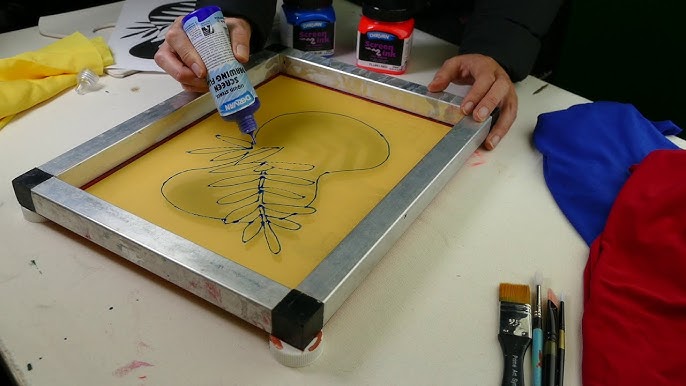The Essential Overview to Recognizing Screen Printing and Its Versatile Makes use of
Screen printing has an abundant background that goes back to old times, evolving into an advanced strategy made use of across numerous industries today. This guide checks out the ins and outs of the screen printing procedure, describing its applications in home, marketing, and style design - 10:9 Design contact. Understanding these fundamentals can open up imaginative possibility for both creative and commercial jobs. The complying with areas will certainly expose necessary ideas and strategies to boost one's screen printing endeavors
The Background of Screen Printing
Screen printing has roots that map back centuries, its development shows the creative and technical improvements of different cultures. Stemming in ancient China, the method was at first used for enhancing textiles and later infect Japan, where it came to be important to Ukiyo-e woodblock printing. The approach changed to Europe in the 18th century, where it got popularity amongst artisans and business printers. The development of picture solution in the 20th century transformed screen printing, enabling even more intricate styles and higher performance. Artists like Andy Warhol additionally thrust its popularity, making use of the medium to produce legendary works that mixed commercialism and great art. By the late 20th century, screen printing had developed itself as a flexible strategy, employed in style, marketing, and art. Today, it proceeds to develop, incorporating digital modern technology and expanding its applications throughout numerous industries.
The Screen Printing Refine Explained
Screen printing changes creative visions right into substantial designs with a collection of precise steps. A picture is produced and after that transferred onto a screen, usually made of great mesh textile extended over a structure. A light-sensitive solution is related to the screen, which is revealed to light, hardening in areas not covered by the picture. After cleaning out the unhardened emulsion, a pattern is developed.
Next, the screen is placed over the substratum, whether it be fabric, paper, or another material. Ink is after that pressed via the open locations of the stencil using a squeegee, transferring the style onto the substrate below. This process can be duplicated for numerous colors, needing different screens for each and every shade. Finally, the printed product is treated utilizing warmth to assure the ink sticks properly, resulting in a resilient, vivid design prepared for usage.
Sorts Of Screen Printing Techniques
Additionally, specialty techniques, such as discharge screen printing, get rid of color from the textile to develop softer prints, while aluminum foil screen printing uses metal aluminum foil to attain a glossy coating (10:9 Design Texas). Each method offers distinct characteristics, catering to numerous imaginative demands and manufacturing scales, inevitably expanding the opportunities within the screen printing domain
Applications of Screen Printing in Different Industries

Additionally, the signs and advertising and marketing sectors use screen printing for developing eye-catching display screens and banners. This approach enables bold shades and complex styles that capture focus. In electronics, screen printing is employed for using conductive inks to motherboard, necessary for component links. The home design industry welcomes screen printing to create distinctive layouts on textiles and wall surface art. Overall, screen printing acts as a vital device across varied fields, boosting products with individualized and visually enticing graphics.
Tips for Successful Screen Printing Projects
While embarking on a screen printing project, mindful attention to information can considerably boost the final result. Picking premium products is important; this consists of the screen, inks, and substratums. Utilizing appropriate mesh counts can impact ink deposition and detail resolution. Preparation is just as crucial; comprehensive cleaning of screens and appropriate exposure times ensure crisp prints.
Next off, precise registration is critical for multi-color prints. Using alignment tools can assist get more info achieve exact layering. Furthermore, testing prints on scrap materials before production aids identify potential concerns without losing sources.

Regularly Asked Concerns
What Materials Are Finest for Screen Printing on Material?
Cotton and polyester blends are suitable for screen printing on fabric because of their resilience and ink absorption. Furthermore, specialized fabrics like silk or canvas can create one-of-a-kind textures and finishes, boosting the overall design top quality.
Just how Do I Clean and Maintain Screen Printing Equipment?
To clean up and keep screen printing devices, one ought to regularly wash screens with proper solvents, evaluate squeegees for wear, lube relocating components, and shop all items in a dry, dust-free atmosphere to extend their life-span.
What Are the Ecological Impacts of Screen Printing?
Screen printing can have considerable ecological effects, consisting of chemical waste from inks and solvents, water usage during cleaning processes, and power intake. Eco-friendly products and sustainable practices are crucial for minimizing these negative effects.
Can Screen Printing Be Done at Home Effectively?
Screen printing can be efficiently done at home with the right materials and techniques. Enthusiasts can create high quality prints, though success depends on their ability level, tools, and understanding of the process entailed.
What Are the Costs Connected With Beginning a Screen Printing Organization?

Starting a screen printing organization includes costs for tools, materials, and work space. Preliminary expenditures normally vary from a few hundred to several thousand bucks, relying on the scale, top quality of machinery, and preferred manufacturing capacity.
Screen printing has a rich history that dates back to old times, evolving right into a sophisticated technique utilized throughout different markets today. An additional technique, rotating screen printing, uses round screens, helping with continual printing on fabric rolls, consequently boosting efficiency for large productions. Furthermore, specialty strategies, such as discharge screen printing, get rid of dye from the material to produce softer prints, while aluminum foil screen printing applies metallic aluminum foil to achieve a glossy finish. In the fashion industry, screen printing is widely utilized to produce dynamic styles on garments, enabling brand names to display their one-of-a-kind styles. Cotton and polyester blends are excellent for screen printing on fabric due to their sturdiness and ink absorption.